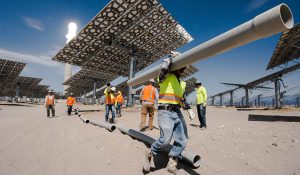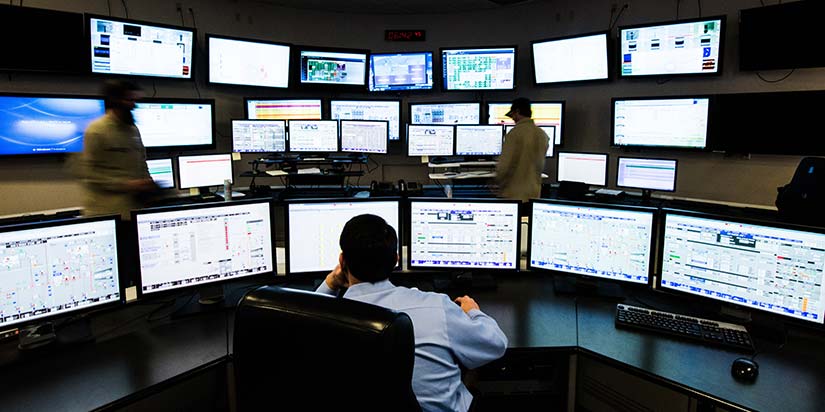So, you want to build a concentrated solar power (CSP) plant. Have you developed a technical specification that clearly defines the key project requirements? Does your team have the relevant experience and knowledge to successfully deploy a solar thermal project? Have you designed your plant for the daily start-ups and transient conditions it will experience? Have you planned appropriately to prepare and mobilize your O&M team to take over operation of the plant at the appropriate time? Have you fully considered the implications of building a plant at a remote location?

Contractors work to install pipe at a solar thermal facility. Photo by Dennis Schroeder, NREL
CSP holds tremendous potential
as a lower-cost, on-demand renewable energy source. With the relatively nascent global CSP industry still in a learning phase, knowledge sharing is critically important to help new plant designers and builders avoid known pitfalls and build high-quality plants that will offer cost-competitive renewable energy and grid services.
Documenting a wealth of lessons learned from the CSP industry, a first-of-its-kind report released。
by the National Renewable Energy Laboratory (NREL) gathers decades of industry knowledge and best practices to support stakeholders including lenders, designers, and developers to leapfrog past known development and technology hurdles.

The controller room operator at the Ivanpah Solar Project monitors systems operations and more than 157,000 heliostats that track the sun and reflect the sunlight to boilers that sit atop three 459-foot-tall power towers. When the concentrated sunlight strikes the boiler pipes, it heats the water to create superheated steam, providing electricity to 140,000 California homes. Photo by Dennis Schroeder, NREL
Funded by the U.S. Department of Energy Solar Energy Technologies Office, the Concentrating Solar Power Best Practices Study focuses on lessons learned from engineering, construction, commissioning, operations, and maintenance of CSP parabolic trough and power tower systems.
Mark Mehos, NREL group manager for Thermal Systems R&D, sees the report as a means to help build a new wave of reliable CSP plants in U.S. and global markets. Mehos explains that future CSP installations built with longer duration storage will be complementary to solar photovoltaics (PV) and batteries. According to Mehos, such hybrid systems are becoming the standard.
“Think about a plant that combines CSP and PV, operating all day and into the night,» Mehos said. «CSP can fill in during the shoulder periods late into the evening or really early in the morning when PV and PV-and-battery systems with short duration storage aren’t necessarily generating electricity.”
To get there, he said, “The first thing we need is for CSP to continue to lower its cost while improving overall reliability.”
In developing the report, NREL partnered with Solar Dynamics Managing Director Hank Price, a 30-year veteran in the CSP industry and former NREL researcher. Price describes an evolving CSP industry with significant opportunities to share knowledge and bypass known issues in plant development. During the course of a year and a half, the authors visited all the operating molten-salt tower plants in the world outside of China, as well as many of the world’s 80 operating trough plants.
«We visited and talked to a lot of people involved in these projects and have a good idea of the issues the plants are facing,» Price said. “None of them are insurmountable problems—they were more related to implementation and understanding correct designs and correct operations. We think the report will help the financial community be more comfortable that projects will work, and we hope to give guidance to projects as to the key things to watch out for.”
The project team concluded that some of the most significant key learnings were at the management level. Price said,“We went in thinking this would be about technology, but literally over half of the issues identified were about implementation—how to do it right, the structure of the project, the relationship of the parties, and having a clear definition of what the projects are trying to achieve.”